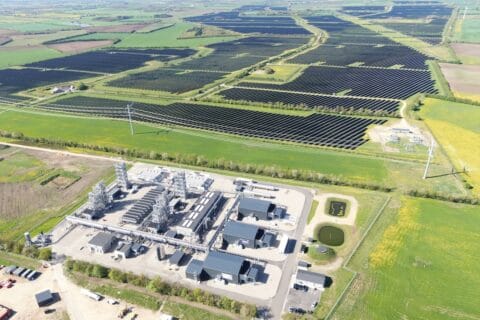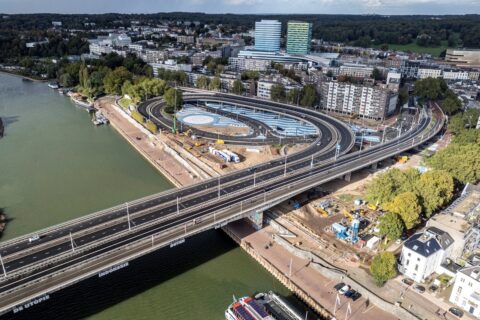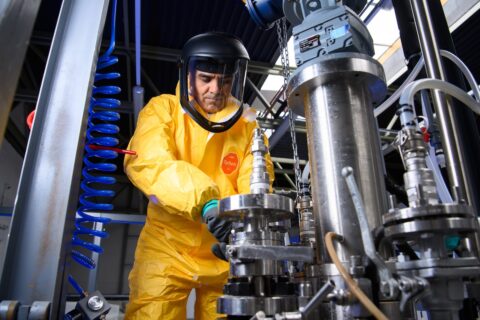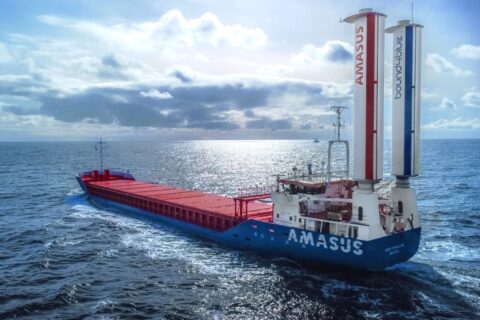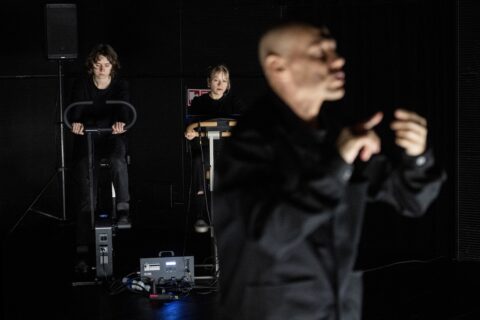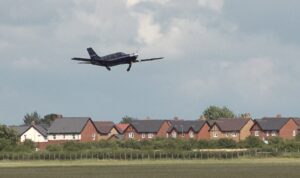
This week saw the first-ever electric-powered flight of commercial-scale aircraft completed from a UK airfield. Conducted at Cranfield Airport by ZeroAvia and undertaken as part of the UK Government-backed Project HyFlyer, the successful test flight in a battery-electric Piper M-class six-seater aircraft represents another important milestone for decarbonisation of air travel and transport.
Funded through Innovate UK and the Aerospace Technology Institute (ATI)-led Aerospace R&T programme, Project HyFlyer aims to decarbonise medium-range small passenger aircraft by demonstrating powertrain technology to replace conventional engines in propeller aircraft. The conventional powertrain in the aircraft will be replaced with electric motors, hydrogen fuel cells and gas storage.
ZeroAvia is focused on developing a hydrogen fuel cell powertrain. Hydrogen-electric offers the same zero-emission potential as battery-electric, but has a much more promising energy-to-weight ratio, making it viable for commercial operations at a much larger scale and in a shorter timeframe.
Additionally, hydrogen-electric powertrain is projected to have lower operating costs due to the high cost of battery cycling in typical high-utilisation regional aircraft. The longer-distance hydrogen-electric test flights are planned for later this summer.
Beyond HyFlyer, ZeroAvia plans commercially relevant, certified 10-20 seat configurations ready to go within three years, plus 50-100 seat configurations in flight by the end of the decade. The company projects that aircraft over 200 seats with a range in excess of 3,000 nautical miles will be achievable by 2040 without requiring any fundamental scientific breakthroughs.
In spite of the challenges presented by the lockdown, and thanks to the support by the Airport’s Operations team, Cranfield University, and Cranfield Aerospace, the HyFlyer project has made big strides in progressing the programme with minimal delays. A hydrogen refuelling infrastructure has recently been commissioned, and ZeroAvia has completed a full set of ground-based full-power flight simulations for its long-distance hydrogen flights.
Commenting on the day of the test-flight success, Val Miftakhov, ZeroAvia Founder and CEO said:
“This is the latest in a series of milestones that moves the possibility of zero-emission flight closer to reality. We all want the aviation industry to come back after the pandemic on a firm footing to be able to move to a net zero future, with a green recovery. That will not be possible without realistic, commercial options for zero-emission flight.”
This first flight is another win for UK decarbonisation, added Dr Simon Weeks, Chief Technology Officer, ATI:
“The ATI is delighted to see the first flight of ZeroAvia’s battery-electric aircraft at Cranfield. This exciting ATI-funded project is the next step in an effort to develop a commercial zero-emissions hydrogen-fuel-cell-powered commercial aircraft in the UK.”
Project HyFlyer will culminate in a UK-based 250-300 nautical mile (NM) flight from the Orkney Islands in Scotland. This project is a key step on ZeroAvia’s journey towards supplying to commercial operators and aircraft manufacturers in 2023, initially targeting up to 500-mile regional flights in 10 to 20-seat fixed-wing aircraft.
ZeroAvia’s solution aims to deliver the same performance as a conventional aircraft engine, but with zero carbon emissions and at around half of the operating costs.
As part of the project, ZeroAvia is partnering with some of the most innovative technology, advanced manufacturing, energy and aviation companies in the UK. The European Marine Energy Centre (EMEC) is supporting the development of the infrastructure needed to fuel the aircraft with green hydrogen, at Cranfield and on Orkney.
Market-leading fuel-cell engineering company Intelligent Energy is optimising its proprietary high-power evaporatively cooled fuel-cell technology for aviation use cases.
ZeroAvia is a leader in zero-emission aviation, flying the world’s largest zero-emission aircraft without any fossil fuel support since the spring of 2019. Its focus is the design and commercialisation of hydrogen-powered aviation solutions to address a variety of markets, initially targeting short-haul 10-20-seat commercial flights up to 500 miles, air taxis, package delivery and more.
To date, ZeroAvia has secured FAA experimental certificates for its air taxi prototypes, passed significant flight tests, and is on track for commercial deliveries by 2023.
EMEC Hydrogen is the arm of the European Marine Energy Centre (EMEC) focused on hydrogen innovation and demonstration. Using Orkney’s renewable energy to produce green hydrogen, EMEC Hydrogen is a partner in a growing number of innovative energy systems and hydrogen demonstration projects.
Intelligent Energy is a focused on the development and manufacture of its Proton Exchange Membrane (PEM) fuel cell products, for customers in the automotive, aerospace, generator, telecoms, materials handling and Unmanned Aerial Vehicle (UAV) sectors. The company is headquartered and manufactures in Loughborough in the UK, with additional offices and representation in the US, Japan, China and Korea.
The HyFlyer project is supported by the ATI Programme, a joint Government and industry investment to maintain and grow the UK’s competitive position in civil aerospace design and manufacture. Delivered through a partnership between the Aerospace Technology Institute (ATI), Department for Business, Energy & Industrial Strategy (BEIS) and Innovate UK, the programme addresses technology, capability and supply chain challenges.
Further Reading:
- More about ZeroAvia.
- More about EMEC Hydrogen.
- More about Intelligent Energy.
- More on Innovate UK and the Aerospace Technology Institute (ATI).
- More on green planes, trains, cars and bikes in Hydrogen: A rising balloon or bursting bubble.
>>> Do you have sustainability news to broadcast and share? If you would like to see it featured here on SustMeme, please use these Contact details to get in touch and send us your Press Release for editorial consideration. Thanks.

